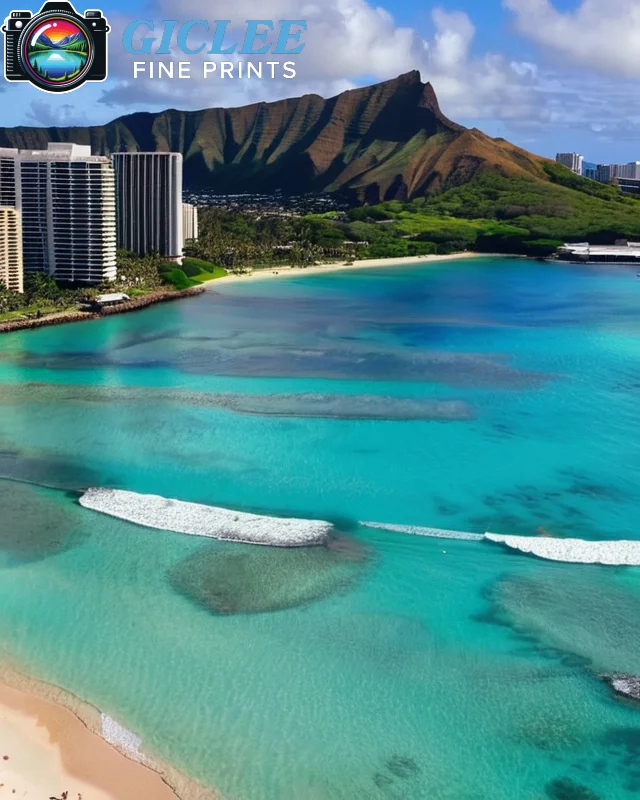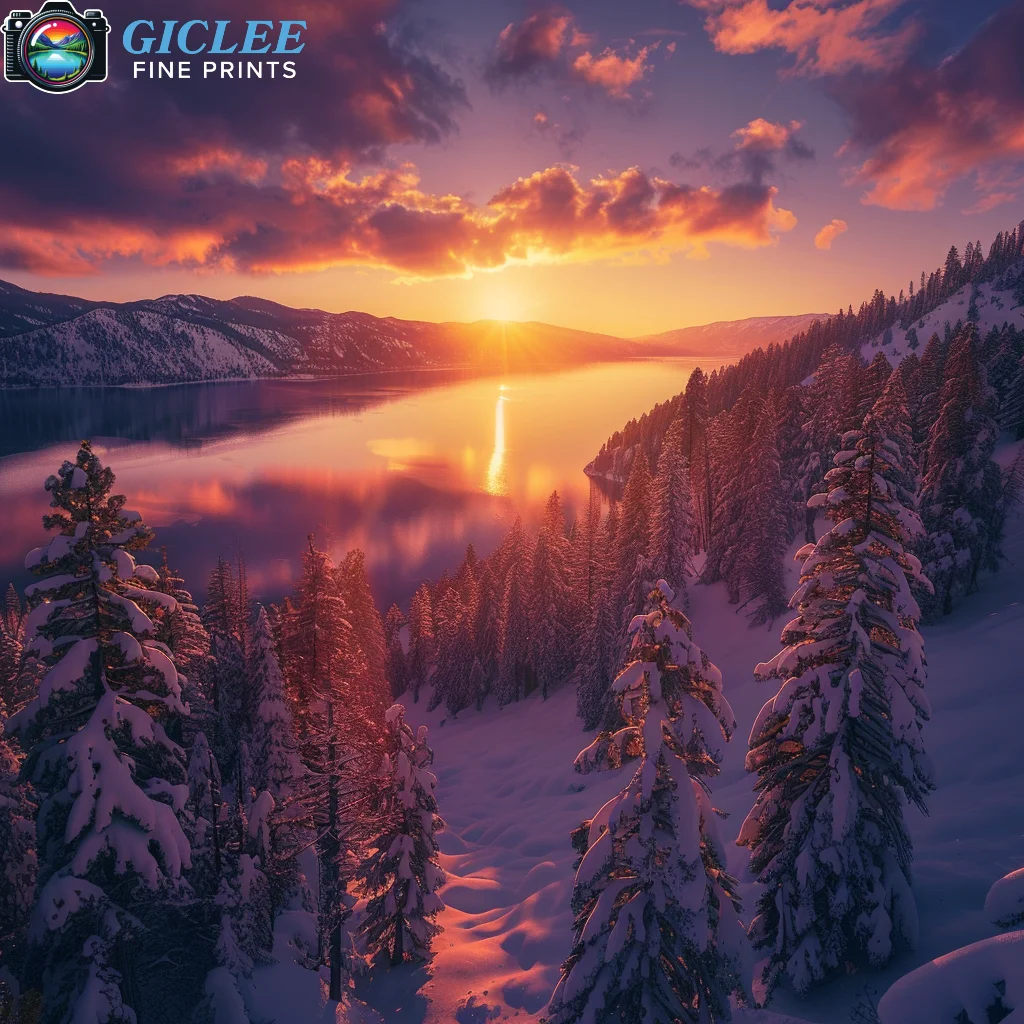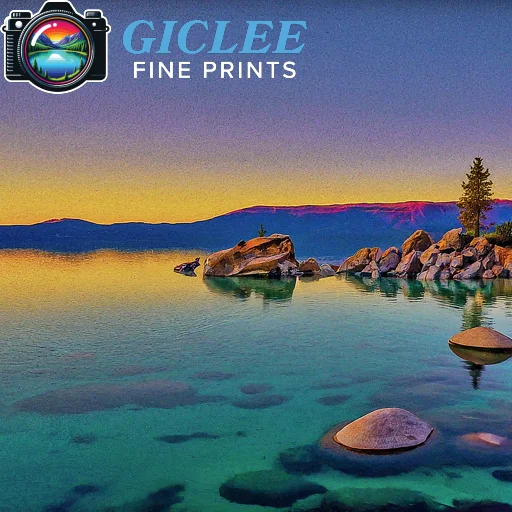
When preparing your artwork or photography for print, understanding the file requirements and sizes is crucial to achieving high-quality results. Whether you’re printing on canvas, fine art paper, or metal, ensuring your files meet the necessary specifications guarantees sharpness, clarity, and color accuracy in the final product. At Giclee Fine Prints, we provide expert guidance to help you navigate the technical aspects of print preparation and ensure your images look stunning when printed.
Resolution: Ensuring Sharpness and Clarity
Resolution is one of the most important factors in ensuring that your print looks sharp and clear, especially for larger formats like canvas or fine art paper prints. Resolution is measured in DPI (dots per inch), and the higher the DPI, the more detail and sharpness your print will have.
Key Tips:
- 300 DPI Minimum: For high-quality prints, always ensure your file is at least 300 DPI at the final print size. This resolution ensures your image retains its detail and clarity, even when enlarged.
- Higher DPI for Larger Prints: If you’re creating large canvas prints or poster-sized artwork, you may want to use a resolution higher than 300 DPI to maintain crispness in fine details.
Best For:
- Professional photographers preparing large prints for clients or exhibitions.
- Artists creating detailed reproductions of paintings or digital artwork.
File Formats: Choosing the Right Format for Printing
The file format you use can significantly impact the quality of your final print. Different formats offer varying levels of compression, quality preservation, and flexibility when printing.
Best File Formats:
- TIFF (Tagged Image File Format): Ideal for printing, TIFF files are uncompressed and maintain all the detail and color information from the original image, ensuring top-tier quality.
- PSD (Photoshop Document): If you’re using Photoshop to prepare your file, PSD allows you to keep layers intact and make edits before finalizing the print file.
- JPEG (High Quality): JPEGs are acceptable if they are saved at maximum quality. However, due to compression, some detail may be lost, making this format less ideal for large or highly detailed prints.
- PNG (Portable Network Graphics): Suitable for art prints with transparency or digital artwork, as PNG files retain high detail without compression.
Best For:
- High-resolution artwork or photography that demands top quality in color and detail.
- Prints on canvas or fine art paper where image quality is critical.

Sizing Your Image: Matching File Size to Print Size
It’s essential to prepare your file at the correct size to ensure the best print quality. If your file is too small, enlarging it for printing may result in pixelation and loss of detail.
Key Tips:
- Set File Size at 100%: Make sure the file you’re sending for print is set to 100% of the intended print size. For example, if you’re printing a 16×20-inch canvas print, ensure the file size is set to 16×20 inches at 300 DPI.
- Avoid Upscaling: If your image resolution is too low, don’t try to artificially enlarge it. Upscaling can lead to blurry, pixelated prints. Instead, use high-resolution files from the start to avoid loss of detail.
- Consider Aspect Ratio: Match the aspect ratio of your image to the aspect ratio of the print size. If the aspect ratio differs, you may need to crop the image or add borders to prevent distortion.
Best For:
- Large-format printing, such as posters on my wall or canvas prints, where maintaining detail is critical.
- Fine artworks or intricate photography that demands exact sizing and proportions.
Color Space: Preserving Color Accuracy
The color space you choose plays a vital role in how your printed artwork or photography looks compared to what you see on your screen. Choosing the right color space ensures your print accurately reflects the colors in your file.
Best Color Spaces:
- Adobe RGB: Adobe RGB is a wider color gamut than sRGB, capturing more colors and making it ideal for prints with vibrant, rich tones. If your file is in Adobe RGB, it will better preserve the nuances of colors during the print process.
- CMYK for Print: Some printers use CMYK color mode for print. However, most high-end printing processes like giclee printing use Adobe RGB for better color reproduction.
- Monitor Calibration: Ensure your monitor is calibrated to accurately display colors before you prepare your file for print. This helps to avoid any discrepancies between the colors on your screen and in the final print.
Best For:
- Professional photographers who need to ensure true-to-life color reproduction in their prints.
- Artists whose work relies on specific color schemes or gradients that must remain accurate.
Bleed and Borders: Preparing for Gallery Wraps and Frames
When preparing files for printing on canvas or fine art paper, you may need to consider bleed and borders, particularly if you’re opting for a gallery wrap or framing the print.
Bleed Considerations:
- Add a Bleed for Canvas Wraps: If you’re printing on canvas and want a gallery wrap, add an additional 2-3 inches on each side of your image to account for the wrap. This ensures that the image continues around the edges of the frame without cutting off important details.
- No Bleed for Framed Prints: If you’re printing for a framed display, there’s no need for a bleed. However, adding a border to your image can make framing easier, particularly for fine art prints.
Best For:
- Canvas prints where the image wraps around the frame for a seamless, professional look.
- Framed artwork where the image remains intact without losing details to the frame’s edges.

Soft Proofing: Ensuring Color Accuracy Before Printing
Soft proofing allows you to preview how your image will appear when printed. This is a critical step to ensure your file meets the print requirements, and it helps you make any necessary adjustments before the final print run.
How to Soft Proof:
- Use ICC Profiles: Download the ICC profile for the specific printer and paper you’ll be using. This helps you simulate how the colors in your image will look on that specific medium.
- Adjust Accordingly: Once you’ve soft proofed your image, make any necessary adjustments to contrast, brightness, or color to ensure that your print looks exactly as you intend.
Best For:
- Professional photographers or artists who need precise color matching across prints.
- Fine art prints where even slight color shifts can affect the overall appearance of the artwork.
File Naming and Delivery
Once your file is prepared and ready for print, it’s important to ensure it’s delivered correctly, with clear file naming and specifications.
File Naming Tips:
- Include Size and Color Space: Name your file in a way that indicates the print size and color space. For example: “Landscape_Print_24x36_AdobeRGB.tiff”.
- Send the Highest-Resolution Version: Always send the highest-quality file possible, whether via file transfer services or on a USB drive. Compressing files for email or uploading low-resolution versions can negatively impact print quality.
Best For:
- Photographers submitting files for client orders or large projects.
- Artists creating limited-edition prints that require exact file specifications.
Contact Us
Our address is: 3816 Pioneer Trail Ste #3, South Lake Tahoe, CA 96150
Email: Info@gicleefineprints.com
FAQs
TIFF files are the best option for high-quality printing because they are uncompressed and maintain all the details of your image.
It’s not recommended to print low-resolution images, as they may appear pixelated or blurry. Always use high-resolution files to ensure the best results.
Adobe RGB is ideal for prints as it covers a wider color gamut than sRGB. For specialized printing processes, CMYK may also be used.


